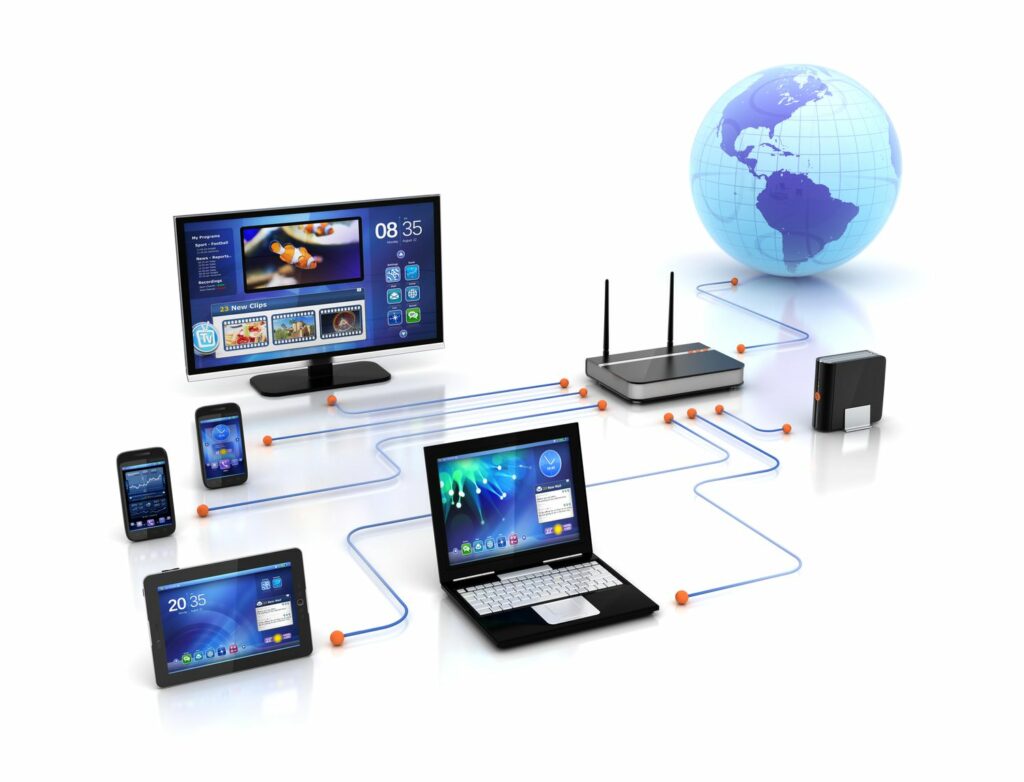
In today’s digital age, computer networks play an indispensable role in connecting the world. Whether you’re browsing the web, sending an email, or streaming your favorite show, computer networks are the backbone of our interconnected world. This article aims to provide a comprehensive overview of computer networks, from their basic concepts to their advanced applications. So, fasten your seatbelts as we embark on this journey through the intricate web of computer networks.
Introduction to Computer Networks
A computer network is a collection of interconnected devices and systems that enable data communication and resource sharing. It allows computers and other devices to exchange information and collaborate seamlessly. Computer networks come in various sizes and types, catering to different needs and purposes.
Types of Computer Networks
Local Area Network (LAN)
A LAN is a network that covers a small geographical area, such as a single building or campus. It allows devices like computers and printers to communicate with each other.
Wide Area Network (WAN)
WANs, on the other hand, span larger distances and can connect LANs located in different cities or countries. The internet itself is the most extensive WAN, connecting people globally.
Metropolitan Area Network (MAN)
MANs fill the gap between LANs and WANs, covering a city or a large campus. They are commonly used by businesses and educational institutions.
Networking Protocols
Networking protocols are a set of rules and conventions that govern how data is transmitted and received in a network. The most prevalent protocol suite is TCP/IP, which underpins the functioning of the internet.
Network Topologies
The physical arrangement of devices in a network is referred to as its topology. Different topologies include the star, bus, and ring topologies, each with its advantages and disadvantages.
Network Devices
To facilitate communication within a network, various devices are employed. Routers route data between different networks, switches connect devices within a network, and modems enable internet connectivity.
Internet and the World Wide Web
The internet is a vast global network of interconnected networks, and the World Wide Web (WWW) is a collection of webpages accessible through the internet. Understanding the difference between the two is crucial.
Wireless Networking
Wireless networks have become ubiquitous, allowing for convenient internet access without the need for physical cables. Wi-Fi is a prevalent example of wireless technology.
Network Security
Ensuring the security of data transmitted over a network is paramount. Firewalls, antivirus software, and encryption techniques are employed to safeguard sensitive information.
Cloud Computing and Networking
Cloud computing relies heavily on networks to deliver services and store data remotely. This technology has revolutionized the way businesses operate.
Internet of Things (IoT)
The IoT connects everyday objects to the internet, enabling them to gather and exchange data. It has applications in various industries, including healthcare and smart homes.
Emerging Trends in Networking
In the rapidly evolving world of networking, staying up-to-date with the latest trends is essential. Keep an eye on 5G technology, edge computing, and software-defined networking (SDN).
The Future of Computer Networks
As technology continues to advance, so will computer networks. The future promises faster speeds, greater connectivity, and innovative applications we can only imagine.
Conclusion
Computer networks are the invisible threads that weave our digital world together. From the smallest LAN to the vast expanse of the internet, they enable us to communicate, collaborate, and explore. As technology marches forward, the role of computer networks in our lives will only become more significant.
